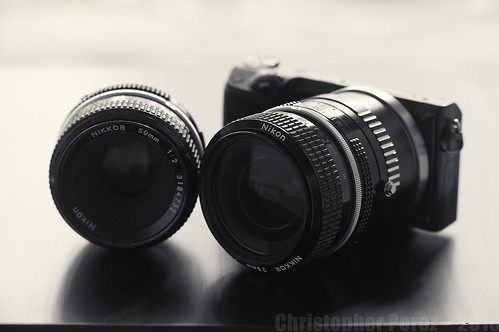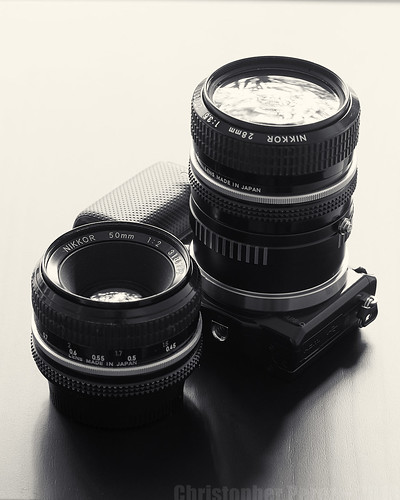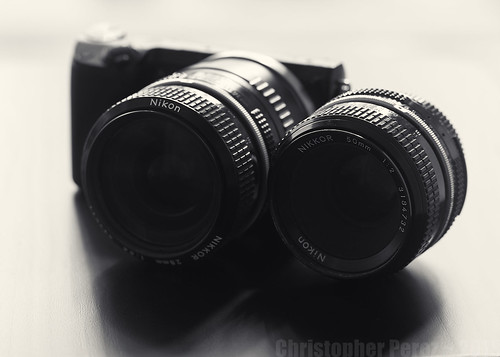I feel increasingly like I'm stuck in the past. Make no mistake, I enjoy being stuck there. But I can very easily measure the distance between where I am and where imaging technologies have gone by taking a look at the current state of the art.

Petapixel has an article about a Chinese phone manufacturer who sells a 50mpixel imaging device that is all too shockingly close in image quality to Canon's 5Ds 50monsterpixel. The comment about the use of computational imaging explained some of the improbably good technologies that are now available.
It's been a number of years since I thrashed and whinged over leaving traditional silver film photography behind to dive into digital. Even then I felt like I was following the trailing edge of changes in imaging technologies.
I'd been heavily invested in large and medium format cameras and lenses. Exotic lenses were fascinating to me. New film developing techniques were followed with great interest. The latest advances in film production were tracked. A room in the basement was filled with enlargers, print paper, boxes of film, and large format film cameras of all sizes and shapes. The collection of lenses I could choose from was rather impressive.
Then suddenly, in the blink of an eye, I went from packing a 4x5 Speed Graphic, three small fabulously sharp lenses, Kodak Readyloads, and boxes of Polaroid Type-55 for a business trip to India, to realizing there was no room left in the suitcase for my clothes, to jettisoning the entire rig and buying a wee-Canon A640 digital point and shoot.
My first digital images were nothing to write home about. There was no RAW option on the camera, and the jpg processing left many images looking more like water colorings than photographs. But the next trip to India had me carrying a Canon 5D MkII and a 24-105L. I came home with a number of images the second trip that I still enjoy.
After moving to Europe sold my Canon DSLRs and moved my camera kit into Sony APS-C mirrorless. The size, adaptability, and image quality of these cameras continue to impress me.
In the past year I've watched the prices of used camera gear drop and I wonder if the market is saturated. First I picked up a Sony NEX-5T with kit lens for 150Euro. I sold the lens for 60Euro, which left me with a 90Euro camera body.
Then I watched as old manual focus lens prices in some cases dropped like a rock. Lenses that used to cost a minor fortune were suddenly available for around 50 Euro or less.
Since I'm retired, living on a fixed income, but still enjoy playing around with camera gear, I found these developments (pardon the pun) rather exciting. Which led me to consider the lowest price two lens camera kit that I have on hand.

What do I get with this? To start, I get a very small, light, WiFi and NFC capable 16mpixel camera. The images I get out of these thrill me. No, I don't make prints larger than 13x19, so the sensor size isn't really as small as it might seem compared to current product offerings.


Petapixel has an article about a Chinese phone manufacturer who sells a 50mpixel imaging device that is all too shockingly close in image quality to Canon's 5Ds 50monsterpixel. The comment about the use of computational imaging explained some of the improbably good technologies that are now available.
It's been a number of years since I thrashed and whinged over leaving traditional silver film photography behind to dive into digital. Even then I felt like I was following the trailing edge of changes in imaging technologies.
I'd been heavily invested in large and medium format cameras and lenses. Exotic lenses were fascinating to me. New film developing techniques were followed with great interest. The latest advances in film production were tracked. A room in the basement was filled with enlargers, print paper, boxes of film, and large format film cameras of all sizes and shapes. The collection of lenses I could choose from was rather impressive.
Then suddenly, in the blink of an eye, I went from packing a 4x5 Speed Graphic, three small fabulously sharp lenses, Kodak Readyloads, and boxes of Polaroid Type-55 for a business trip to India, to realizing there was no room left in the suitcase for my clothes, to jettisoning the entire rig and buying a wee-Canon A640 digital point and shoot.
My first digital images were nothing to write home about. There was no RAW option on the camera, and the jpg processing left many images looking more like water colorings than photographs. But the next trip to India had me carrying a Canon 5D MkII and a 24-105L. I came home with a number of images the second trip that I still enjoy.
After moving to Europe sold my Canon DSLRs and moved my camera kit into Sony APS-C mirrorless. The size, adaptability, and image quality of these cameras continue to impress me.
In the past year I've watched the prices of used camera gear drop and I wonder if the market is saturated. First I picked up a Sony NEX-5T with kit lens for 150Euro. I sold the lens for 60Euro, which left me with a 90Euro camera body.
Then I watched as old manual focus lens prices in some cases dropped like a rock. Lenses that used to cost a minor fortune were suddenly available for around 50 Euro or less.
Since I'm retired, living on a fixed income, but still enjoy playing around with camera gear, I found these developments (pardon the pun) rather exciting. Which led me to consider the lowest price two lens camera kit that I have on hand.
- 90Euro Sony NEX-5T
- 10Euro Nikon F to NEX adapter
- 55Euro Nikon Nikkor 28mm f/3.5 Ai
- 7Euro Nikon Nikkor 50mm f/2 Ai
All up cost - 162Euro

What do I get with this? To start, I get a very small, light, WiFi and NFC capable 16mpixel camera. The images I get out of these thrill me. No, I don't make prints larger than 13x19, so the sensor size isn't really as small as it might seem compared to current product offerings.
In the 28mm Nikkor f/3.5 I get a 40mm full-frame equivalent lens that is sharp from wide open. Sure, the maximum aperture is less than many people prefer, but I don't typically shoot razor thin depth of field images myself. The effective focal-length slots nicely between full-frame 35mm and 50mm lenses. It's kind of a Goldielocks lens.
The super cheap 50mm f/2 acts as a 75mm full-frame equivalent optic. This too is razor sharp from wide open. At 75mm I find the lens nearly perfect for isolating interesting subject matter in complex environments. It's also the perfect portrait lens.
Stepping back a moment and thinking about the newest technologies, this inexpensive two lens kit seems archaic. It feels like I'm following the curve. Where some people carry just a cell phone, I carry a camera, lenses, and a small tablet to download and process images on. It seems like a lot of monkey motion.
Considered from another perspective, yes, there is a part of me that would like to try out the latest-greatest imaging tools. I'm sure it would be fun. One Does Everything devices, on the surface of the argument, sound rather attractive. No more shoulder bag weighed down with old bits of metal, plastic, and glass. No need to carry a small Android tablet. I could be "In" with the "In Crowd."
But there is, for me, the important consideration of money. The cost of new Wowy Zowy cell phone camera One Does Everything devices are around 900Euro. For a quarter of the cost I have the already paid for Sony and Nikkors.
If I ever do go the One Does Everything route I wonder how I'll feel contributing to the low-cost equipment glut? There are a few lenses that I paid dearly for just a few years ago (like a mint Nikkor 24mm f/2.8 and a 55mm Micro-Nikkor f/3.5). And there is a life long memory of watching Nikon Kogaku introduce amazing products. But then would it even matter if the images I produced using computational imaging devices were to please me?
For now I think I'll continue to live out my childhood fantasies. These old Nikkor lenses out-resolve commercially available imaging sensors. The photographs I make please me. I enjoy working with old Machine Age gear. It's still a kick in the pants kind of fun.
For now I think I'll continue to live out my childhood fantasies. These old Nikkor lenses out-resolve commercially available imaging sensors. The photographs I make please me. I enjoy working with old Machine Age gear. It's still a kick in the pants kind of fun.
Cost vs Quality vs Capability vs Culture vs Memories vs Creativity vs Fun. These seem to be some of the areas of consideration. When not out shooting photos, that is.

2 comments:
It's OK to be stuck in the past if your photos are stuck in Beauty, which yours are.
Thank you, Ken.
Post a Comment